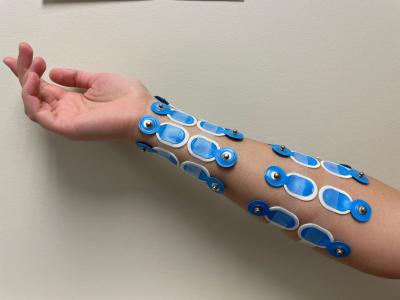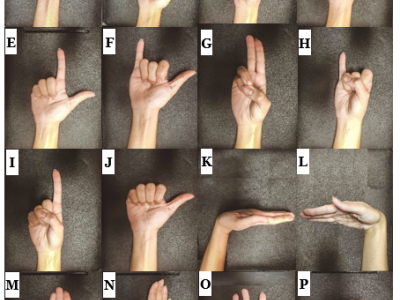Gesture Recognition and Biometrics Electromyography (GRABMyo) Dataset

- Citation Author(s):
-
Jiayuan He (Department of Systems Design Engineering, University of Waterloo)Ning Jiang (Department of Systems Design Engineering, University of Waterloo)
- Submitted by:
- Ning Jiang
- Last updated:
- DOI:
- 10.21227/82v9-2b79
- Data Format:
 3192 views
3192 views
- Categories:
- Keywords:
Abstract
Recently, surface electromyogram (EMG) has been proposed as a novel biometric trait for addressing some key limitations of current biometrics, such as spoofing and liveness. The EMG signals possess a unique characteristic: they are inherently different for individuals (biometrics), and they can be customized to realize multi-length codes or passwords (for example, by performing different gestures). However, current EMG-based biometric research has two critical limitations: 1) a small subject pool, compared to other more established biometric traits, and 2) limited to single-session or single-day data sets. In this study, forearm and wrist EMG data were collected from 43 participants over three different days with long separation (Day 1, Day 8 and Day 29) while they performed static hand and wrist gestures. The multi-day biometric authentication resulted in a median EER of 0.017 for the forearm setup and 0.025 for the wrist setup, comparable to well-established biometric traits suggesting consistent performance over multiple days. The presented large-sample multi-day data set and findings could facilitate further research on EMG-based biometrics and other gesture recognition-based applications
Instructions:
We provide the GRABMyo Dataset comprising EMG signal recordings of 43 participants over 3 different days while performing multiple hand gestures. The signals have been acquired at a sampling rate of 2048 Hz using the EMGUSB2+ device (OT Bioelletronica, Italy). EMG signals have been collected from 16 locations (channels) on the forearm and 12 locations on the wrist.
The signals are provided as ".mat" files. The files are organized under 3 folders, "Session 1", "Session 2" and Session 3". Each folder contains files with the naming "sessioniparticipantj.mat" where i = {1,2,3} and j = {1,2,3...43}. Each mat file contains 7x17 cells for each of the 7 experimental runs and 17 gestures in each run. Each cell contains 32 channles of 5-sec signal data (10240 x 32 matrix). The forearm channels are numbered as {1,2,..8} and {9,10...16}. The wrist channles are numbered {18,19,...23} and {26,27...31}. The unused channels are {17,24,25,32}. The "participantinfo.xlsx" file contains the anthropometric information about the participants. The "motionsequence.txt" contains the order and details of the hand gestures.
Sample matlab codes have been provided to:
1) read the .mat files
2) use the .mat files for standard frequency division based feature extraction
3) save the feature vectors for all the participants in the form of a database (also as .mat files)
These files processing will facilitate the use of machine learning algorithms for applications such as biometrics and gesture recognition. Note that the original signal files can be processed with any feature extraction algorithm.
To run the codes please open "fileread.m" using a licensed Matlab software, set the file paths and execute the code. You will be prompted to overwrite exisitng converted files. Post conversion into .mat foramt, you will be prompted to begin the signal processing and feature extraction steps.
Citing instructions
please cite the work as:
Ashirbad Pradhan, Jiayuan He, Ning Jiang, January 4, 2022, "Gesture Recognition and Biometrics Electromyography (GRABMyo) Dataset", IEEE Dataport, doi: https://dx.doi.org/10.21227/82v9-2b79
Contact
Dr. Ning Jiang,
Director, Waterloo Engineering Bionics Lab, University of Waterloo, Waterloo N2L 3G1, Canada.
EMAIL: ning.jiang@uwaterloo.ca
Dataset Files
- Session 1 contains 43 data files for all the participants (Size: 12 GB)
- Session 2 contains 43 data files for all the participants (Size: 12 GB)
- Session 3 contains 43 data files for all the participants (Size: 12 GB)
- Participant anthropometrics (Size: 28.63 KB)
- Names of the 17 gestures (in sequence) (Size: 501 bytes)
- Graphic explanation of the gestures (Size: 67.33 KB)









Amazing
Amazing